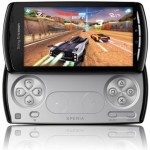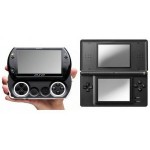All of the current generation gaming consoles have been out since about 2005 (or 2006 in the case of the PS3). Both the Xbox 360 and PS3 focused heavily on performance, each outpacing their predecessors (the original Xbox and PS2) significantly, achieving roughly 300 million polygons per second in performance. Nintendo, on the other hand, chose to focus on revolutionizing the console interface, making the Wii only slightly faster than the GameCube, obtaining about 100 million polygons per second. The Wii wasn’t anywhere near the league of performance found in the Xbox 360 and PS3, but Nintendo still had an advantage. Neither Sony nor Microsoft intends to replace their current consoles until well into 2015. Nintendo has something prepared for 2012: “Project Café.”
The alaTest Blog
Archive for the ‘Gaming’ Category
 It’s almost that time again: E3 2011 is just around the corner, and excitement is in the air. The who’s who of electronic entertainment will be there, including Sony, Nintendo, Microsoft, EA, and Ubisoft to name a few. Every year, E3 manages to surprise us with something big, but just what is expected this year? Let’s take a look.
It’s almost that time again: E3 2011 is just around the corner, and excitement is in the air. The who’s who of electronic entertainment will be there, including Sony, Nintendo, Microsoft, EA, and Ubisoft to name a few. Every year, E3 manages to surprise us with something big, but just what is expected this year? Let’s take a look.
 Nintendo’s newest portable gaming device came out just recently, but everyone knows that Sony is working on something big to respond with: the NGP. Currently, “NGP” is just a codename, meaning “Next Generation Portable.” The actually market name is still in the air; it could be anything from the PSP 2 to the PlayStation 3DS-Killer. Regardless, it will be a huge leap up from the current PSP.
Nintendo’s newest portable gaming device came out just recently, but everyone knows that Sony is working on something big to respond with: the NGP. Currently, “NGP” is just a codename, meaning “Next Generation Portable.” The actually market name is still in the air; it could be anything from the PSP 2 to the PlayStation 3DS-Killer. Regardless, it will be a huge leap up from the current PSP.
 When building your own computer, you generally start by choosing a CPU platform to base it on. CPUs today cost anywhere from $80 up to $1000, and there’s so many models to choose from, it’s tough to know which is the best at the price you can afford. Even if you’re buying a pre-built computer, it can still be useful to know how powerful its CPU is in relation to the overall cost of the system.
When building your own computer, you generally start by choosing a CPU platform to base it on. CPUs today cost anywhere from $80 up to $1000, and there’s so many models to choose from, it’s tough to know which is the best at the price you can afford. Even if you’re buying a pre-built computer, it can still be useful to know how powerful its CPU is in relation to the overall cost of the system.
 Portable gaming has been around for decades, starting with Mattel’s light based handhelds back in the Seventies. Things really started to take off in the late Eighties with Nintendo’s original Game Boy, followed a little over a year later by Sega’s more technologically advanced Game Gear, and even though the Game Boy sold significantly better, this marked the slow start of technological progression of handheld consoles.
Portable gaming has been around for decades, starting with Mattel’s light based handhelds back in the Seventies. Things really started to take off in the late Eighties with Nintendo’s original Game Boy, followed a little over a year later by Sega’s more technologically advanced Game Gear, and even though the Game Boy sold significantly better, this marked the slow start of technological progression of handheld consoles.
 It’s no secret that the winter holiday season is by far the biggest shopping season of the year. In the United States alone, consumers spent nearly $600 billion this year. With all that money flying about, you can’t help but wonder just what exactly people are buying, so we decided to take a look at some of the more popular items this year.
It’s no secret that the winter holiday season is by far the biggest shopping season of the year. In the United States alone, consumers spent nearly $600 billion this year. With all that money flying about, you can’t help but wonder just what exactly people are buying, so we decided to take a look at some of the more popular items this year.




